Played by Georges Sari | Roman equivalent Ariana, Libera | |
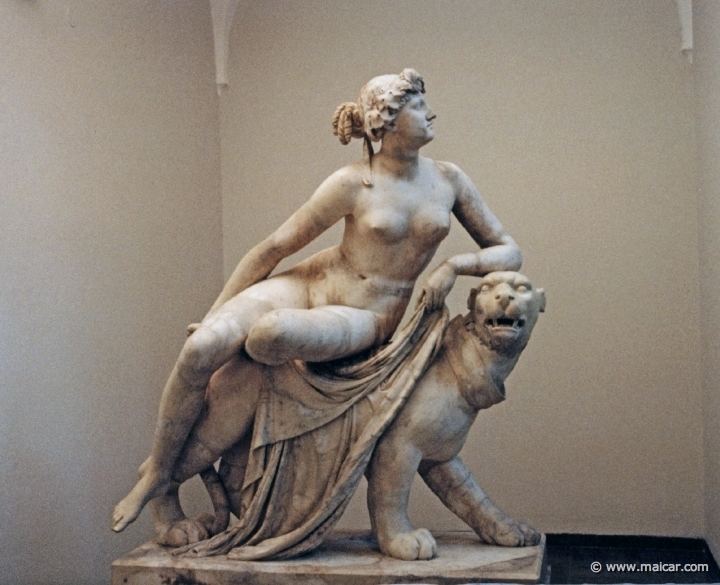 | ||
Similar | ||
Ariadne feel me now
Ariadne (/æriˈædniː/; Greek: Ἀριάδνη; Latin: Ariadne), in Greek mythology, was the daughter of Minos, King of Crete, Son of Zeus and his queen Pasiphaë, daughter of Helios. She is mostly associated with mazes and labyrinths because of her involvement in the myths of the Minotaur and Theseus. Her father put her in charge of the labyrinth where sacrifices were made as part of reparations (either to Poseidon or to Athena, depending on the version of the myth); later, she helped Theseus overcome the Minotaur and save the potential sacrificial victims. In other stories, she became the bride of the god Dionysus, with the question of her being mortal or a goddess varying in those accounts.
Contents
- Ariadne feel me now
- Ariadne feel me now eesti laul 2017
- Minos and Theseus
- Naxos
- Ariadne as a goddess
- In Etruscan culture
- References
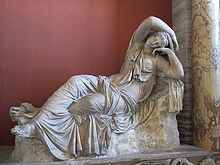
Ariadne feel me now eesti laul 2017
Minos and Theseus
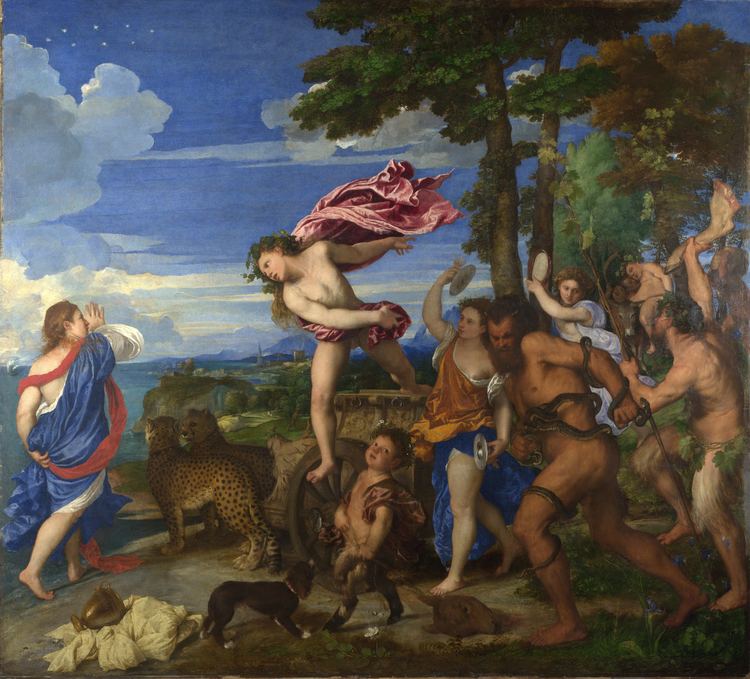
Since ancient Greek myths are passed down through oral tradition, many variations of this and other myths exist. According to an Athenian version of the legend, Minos attacked Athens after his son was killed there. The Athenians asked for terms, and were required to sacrifice seven young men and seven maidens to the Minotaur every seven or nine years. One year, the sacrificial party included Theseus, the son of King Aegeus, who volunteered to come and kill the Minotaur. Ariadne fell in love at first sight, and helped him by giving him a sword and a ball of thread, so that he could find his way out of the Minotaur's labyrinth.
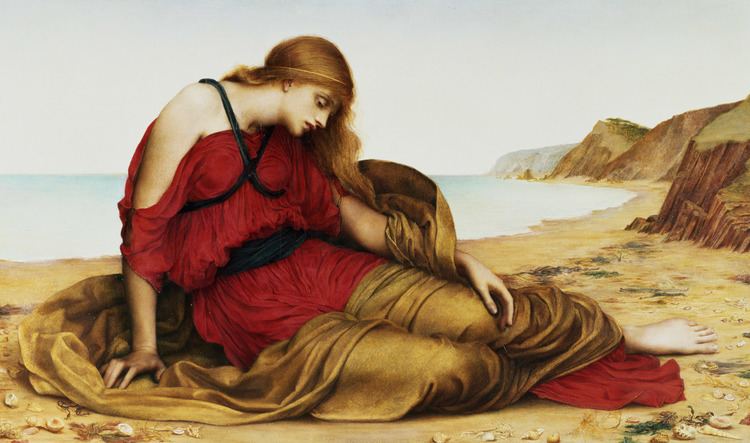
She eloped with Theseus after he achieved his goal, but according to Homer "he had no joy of her, for ere that, Artemis slew her in seagirt Dia because of the witness of Dionysus" (Odyssey XI, 321-5). Homer does not expand on the nature of Dionysus's accusation, but the Oxford Classical Dictionary speculates that she was already married to Dionysus when Theseus ran away with her.
Naxos
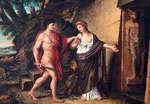
In Hesiod and most other accounts, Theseus abandoned Ariadne sleeping on Naxos, and Dionysus rediscovered and wedded her. In a few versions of the myth, Dionysus appeared to Theseus as they sailed away from Crete, saying that he had chosen Ariadne as his wife and demanding that Theseus leave her on Naxos for him; this has the effect of absolving the Athenian culture-hero of desertion. The vase-painters of Athens often showed Athena leading Theseus from the sleeping Ariadne to his ship.

With Dionysus, she was the mother of Oenopion, the personification of wine, Staphylus (related to grapes), Thoas, Peparethus, Phanus, Eurymedon, Enyeus, Ceramus, Maron, Euanthes, Latramys and Tauropolis. Her wedding diadem was set in the heavens as the constellation Corona Borealis.
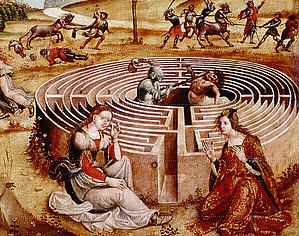
Ariadne remained faithful to Dionysus but was later killed by Perseus at Argos. In other myths she hanged herself from a tree, like Erigone and the hanging Artemis, a Mesopotamian theme. Some scholars have posited, due to her thread-spinning and winding associations, that she was a weaving goddess, like Arachne, supporting this theory with the mytheme of the Hanged Nymph (see weaving in mythology). Dionysus descended into Hades and brought her and his mother Semele back. They then joined the gods in Olympus.
Ariadne as a goddess
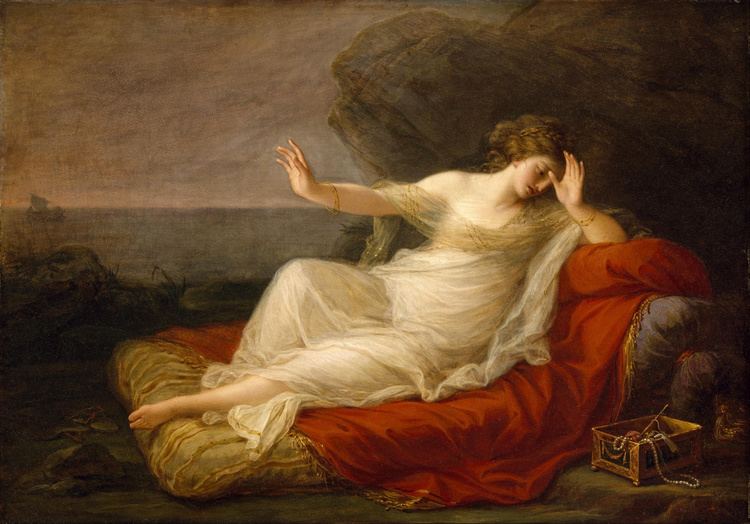
Karl Kerenyi and Robert Graves theorize that Ariadne (whose name they derive from Hesychius's listing of Άδνον, a Cretan-Greek form for arihagne, "utterly pure") was a Great Goddess of Crete, "the first divine personage of Greek mythology to be immediately recognized in Crete", once archaeology had begun. Kerenyi observes that her name is merely an epithet and claims that she was originally the "Mistress of the Labyrinth", both a winding dance-ground and in the Greek view a prison with the dreaded Minotaur at its centre. Kerenyi notes a Linear B inscription from Knossos, "to all the gods, honey... to the mistress of the labyrinth honey" in equal amounts, suggesting to him that the Mistress of the Labyrinth was a Great Goddess in her own right. Professor Barry Powell has suggested she was Minoan Crete's Snake Goddess.
Plutarch, in his vita of Theseus, which treats him as a historical individual, reports that in the Naxos of his day, an earthly Ariadne was separate from a celestial one:
"Some of the Naxians also have a story of their own, that there were two Minoses and two Ariadnes, one of whom, they say, was married to Dionysos in Naxos and bore him Staphylos and his brother, and the other, of a later time, having been carried off by Theseus and then abandoned by him, came to Naxos, accompanied by a nurse named Korkyne, whose tomb they show; and that this Ariadne also died there."In a kylix by the painter Aison (c. 425 – c. 410 BCE) Theseus drags the Minotaur from a temple-like labyrinth, but the goddess who attends him, in this Attic representation, is Athena.
An ancient cult of Aphrodite-Ariadne was observed at Amathus, Cyprus, according to the obscure Hellenistic mythographer Paeon of Amathus; Paeon's works are lost, but his narrative is among the sources cited by Plutarch in his vita of Theseus (20.3-.5). According to the myth that was current at Amathus, the second most important Cypriote cult centre of Aphrodite, Theseus's ship was swept off course and the pregnant and suffering Ariadne put ashore in the storm. Theseus, attempting to secure the ship, was inadvertently swept out to sea, thus being absolved of abandonment. The Cypriote women cared for Ariadne, who died in childbirth and was memorialized in a shrine. Theseus, overcome with grief upon his return, left money for sacrifices to Ariadne and ordered two cult images, one of silver and one of bronze, set up. At the observation in her honour on the second day of the month Gorpiaeus, one of the young men lay on the ground vicariously experiencing the throes of labour. The sacred grove in which the shrine was located was called the grove of Aphrodite Ariadne.
The primitive aspect of the cult at Amathus in this account would appear to be much older than the Athenian-sanctioned shrine of Aphrodite, who has assumed Ariadne (hagne, "sacred") as an epithet at Amathus.
In Etruscan culture
Ariadne (Etruscan: Areatha) is paired with Dionysus (Etruscan: Fufluns) on engraved bronze Etruscan bronze mirrorbacks, where the Athenian culture-hero Theseus is absent, and Semele (Etruscan: Semla), as mother of Dionysus, may accompany the pair, lending a particularly Etruscan air of family authority.
